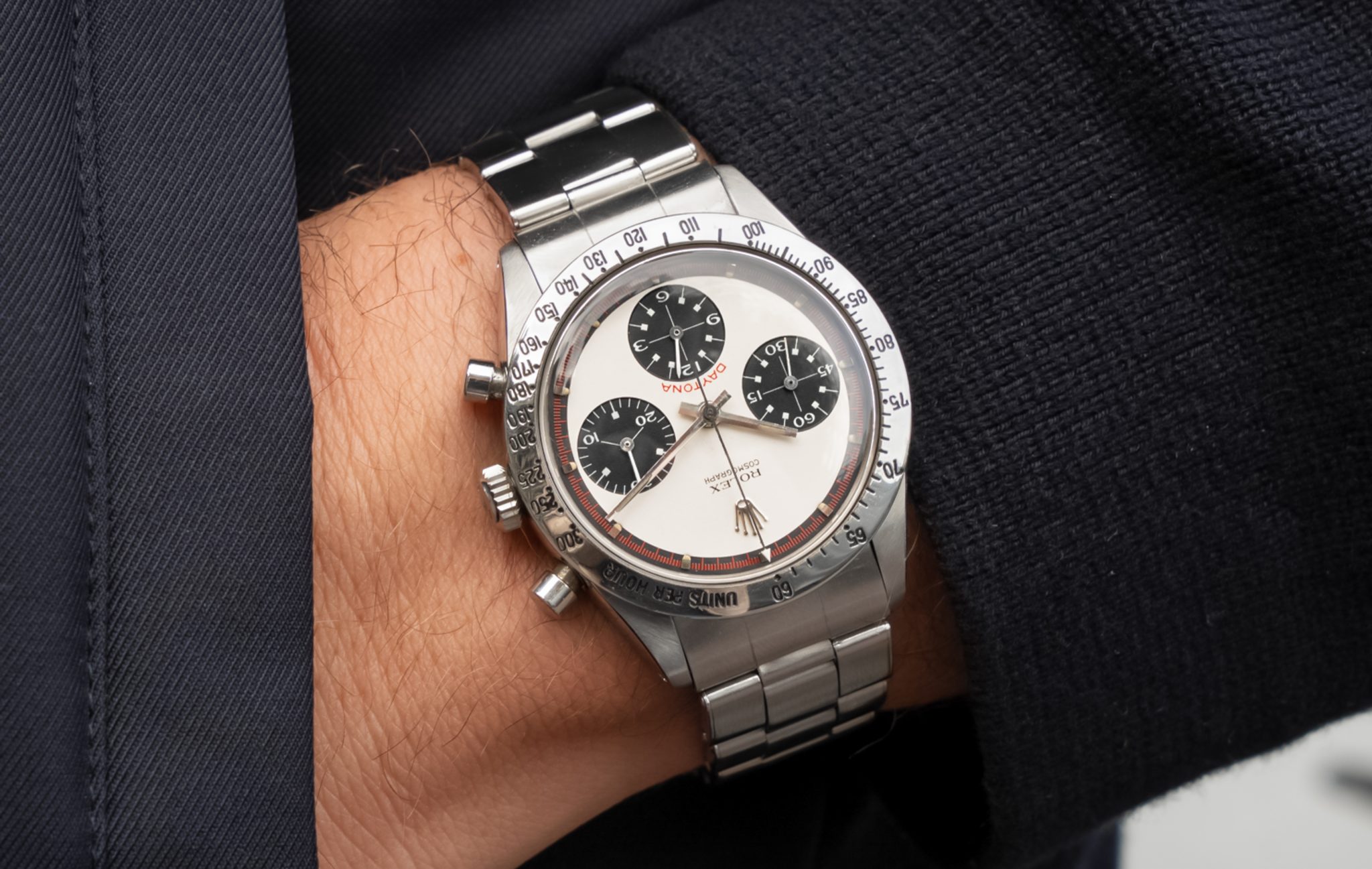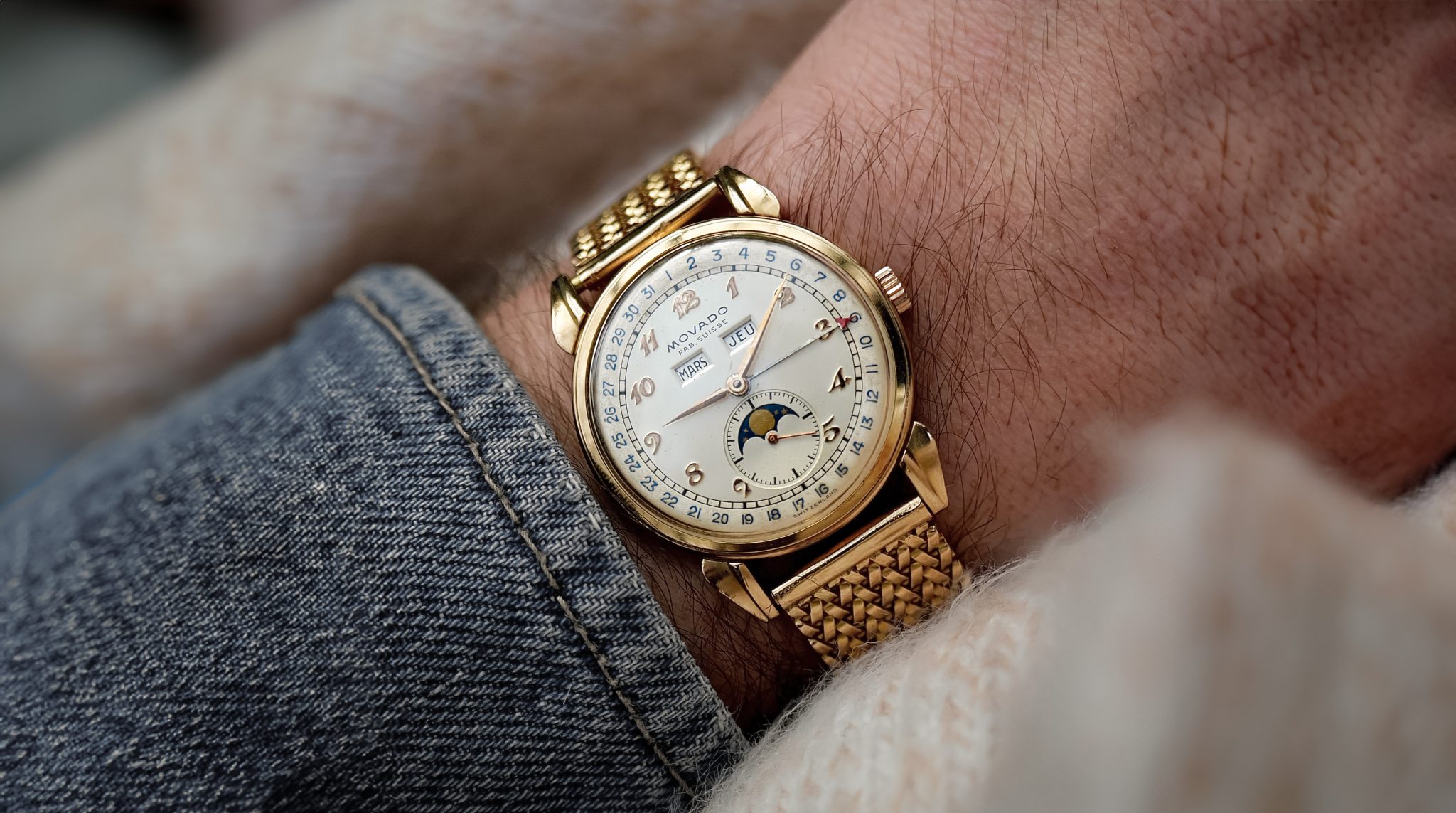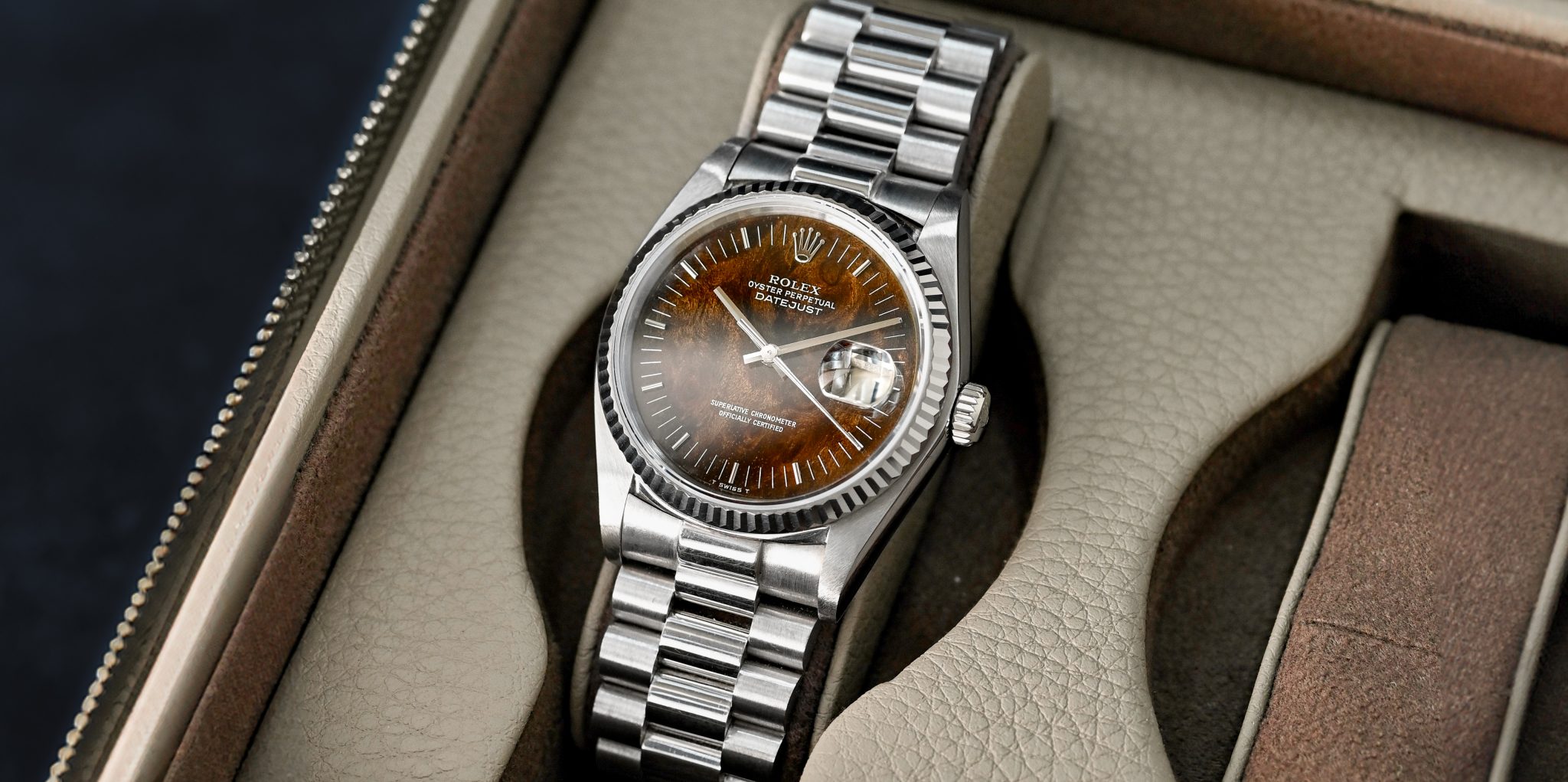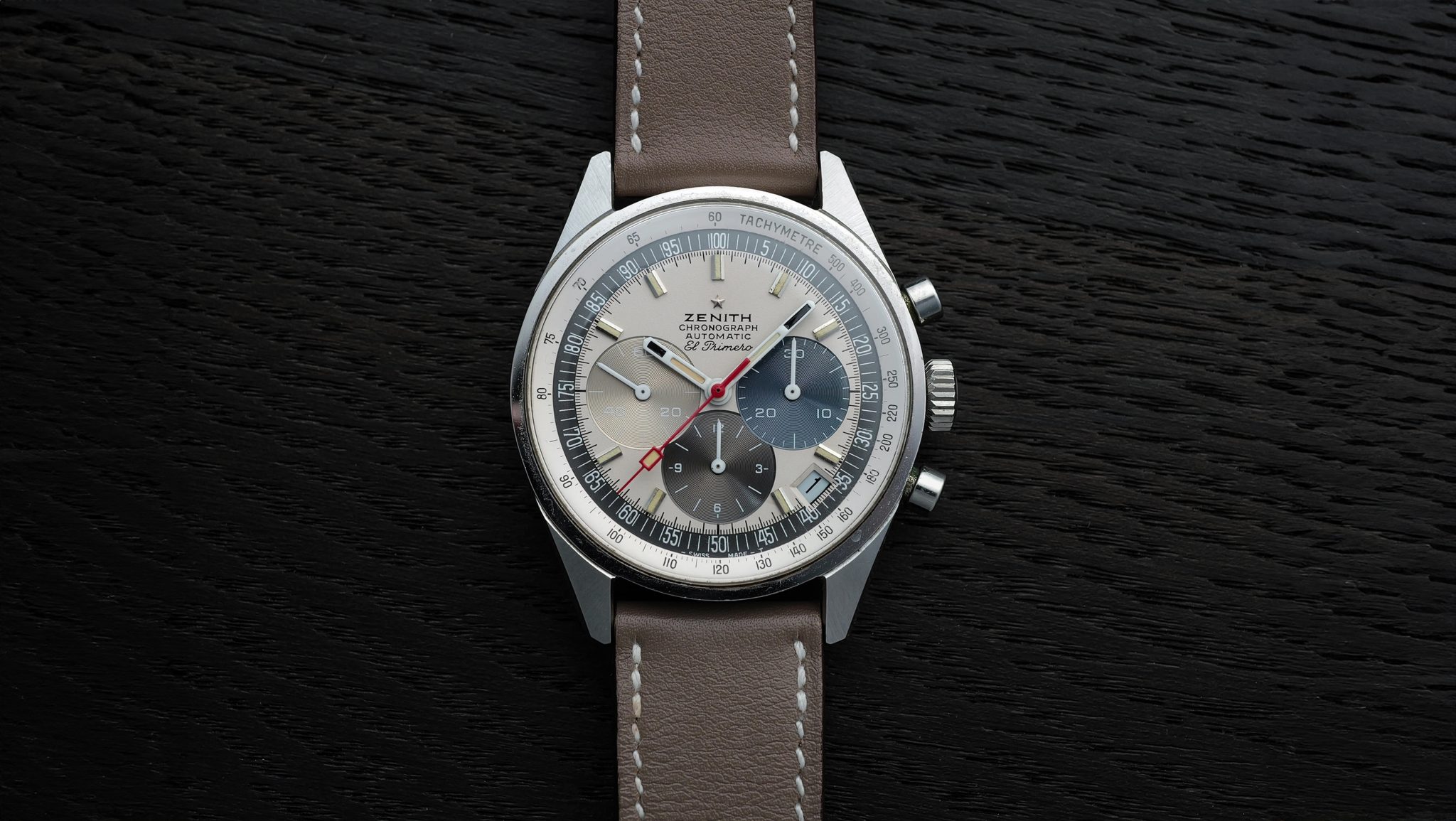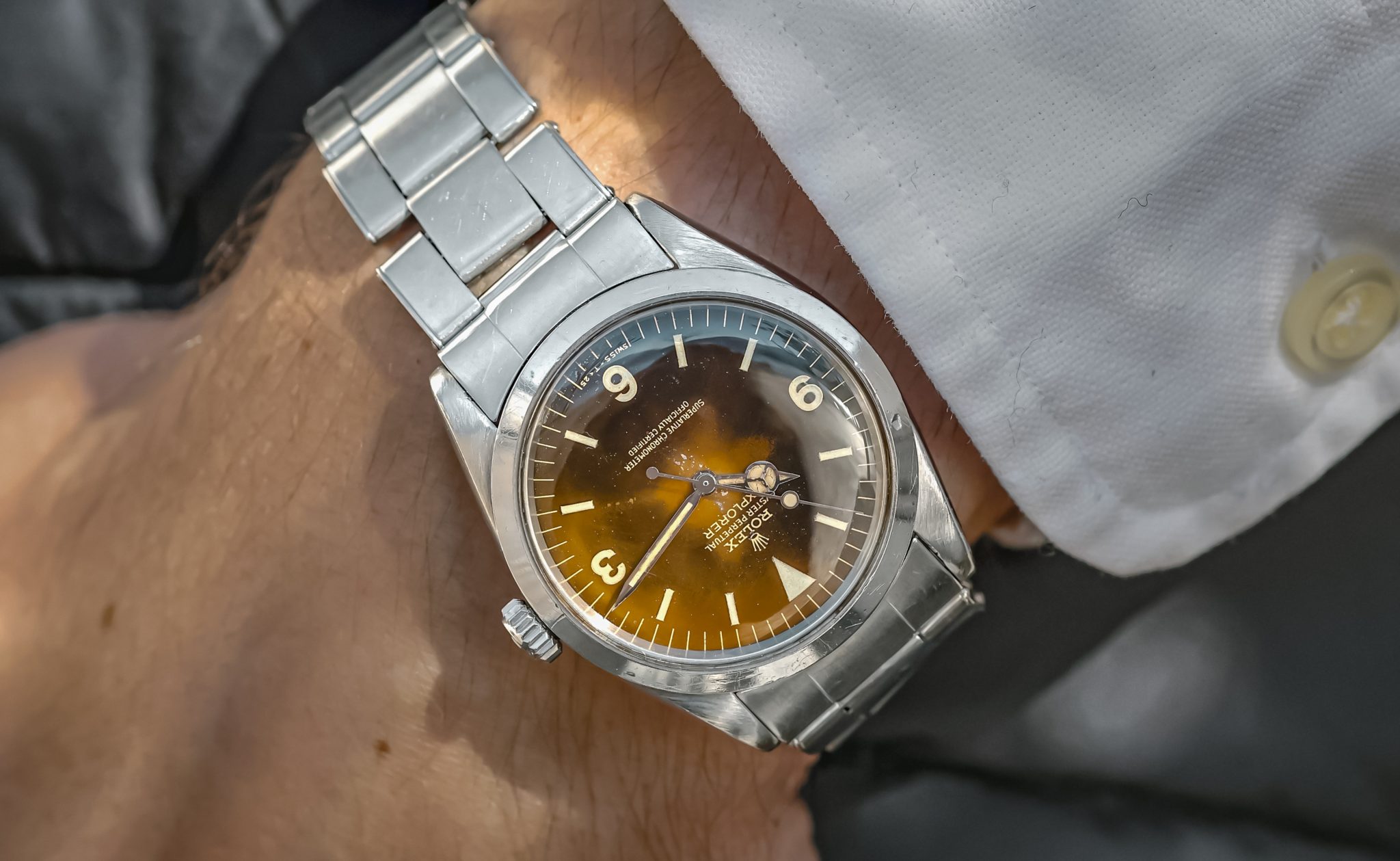
Tropical 1016 Rolex Explorer
There are a handful of watches so desperately attractive and simultaneously difficult to attain that any number of players have been known to attempt to reproduce them with generic components and a liberal interpretation of intellectual property. These players will go unnamed save to say that one starts with M and ends in assena Lab. The other, more relevant here, starts with W and ends in MT. The latter has actually gone so far as to try and reproduce the asymmetrical patina known to develop on some tropical 1016 Explorer examples. And while you can make moral arguments ad nauseam for or against reconstruction, they always leave me entirely cold. Because you know their dials are painted on in attempt to look like what this actually is. This is a perfect caramel dial, aged by only mother nature and father time. And it is, to my eye, entirely irreplicable.
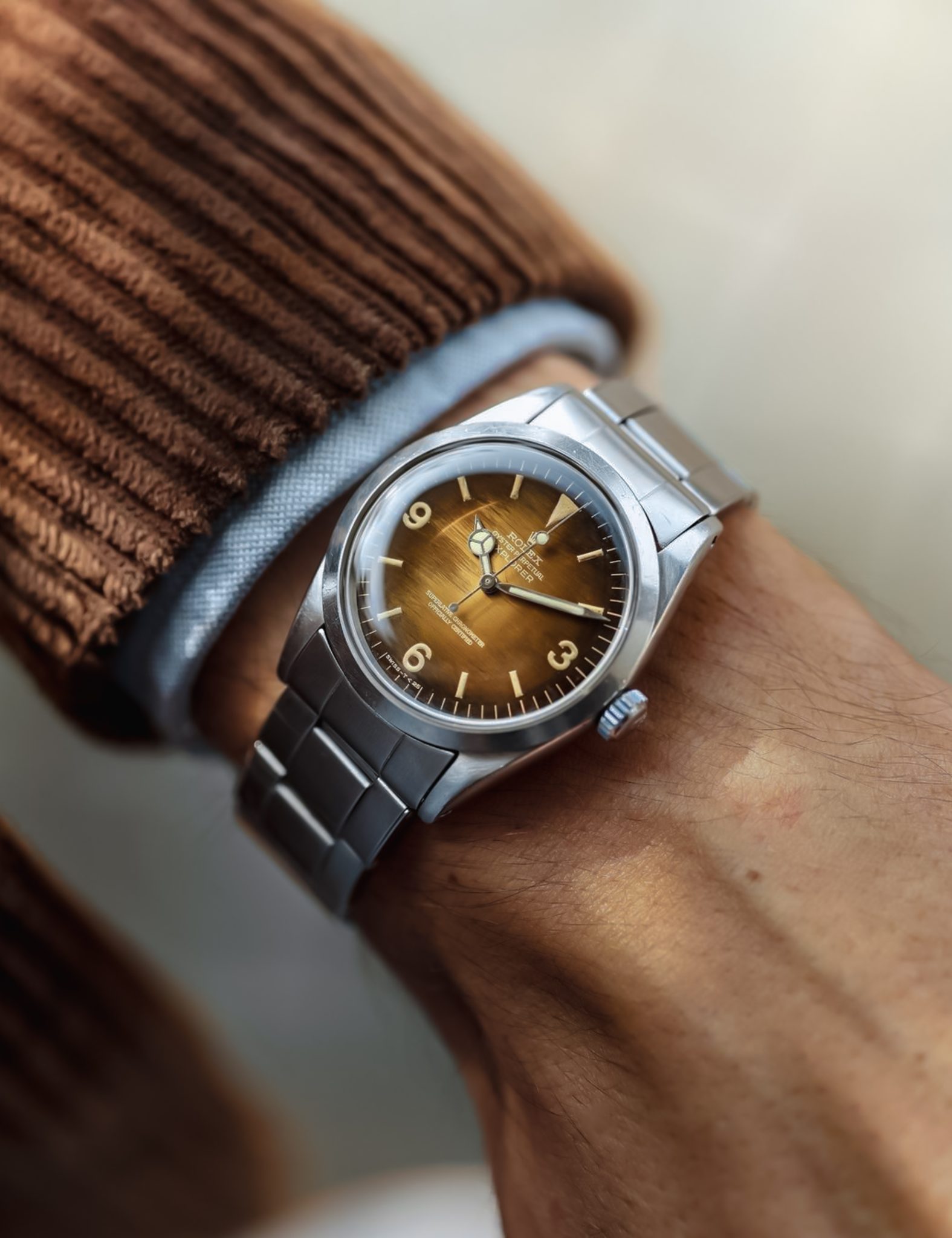
Asymmetrically tropical dials polarize opinion like only spidering can, but the 1016 often winds up here. If you’re new here or a more logical actor than most, you might well be asking, ‘isn’t that a bit like paying more for a Birkin that’s been worn so hard a handle is falling off?’ Yes, and people do that too. We’re willing to because these are rare objects that, as used, grow more beautiful to eventually tangent on perfection through patina. Not everyone loves spider dials, Tiffany stamps, or mocha latte and that’s fine. As I’ve grown fond of saying lately: beauty is in the eye of the beholder, but everyone knows a baddie when they see one. The market would indicate that you’re looking at the ultimate form of Explorer: one that’s done some Exploring. The ultimate 1016 baddie is beaten-up.
Now let’s address the elephant in the room. The 1016 was never on Everest. We don’t actually know what was. It is thought that Edmund Hillary wore a Smiths and Tensing Norgay wore an early Oyster Perpetual that is thought to currently reside in the Beyer museum, though there are multiple claims. And we know that Rolex supplied the expedition with OP Chronometers. What went up top remains not known. Honestly, though, who cares. The 1016 is more important than that. It’s the prototypical Rolex sport watch.
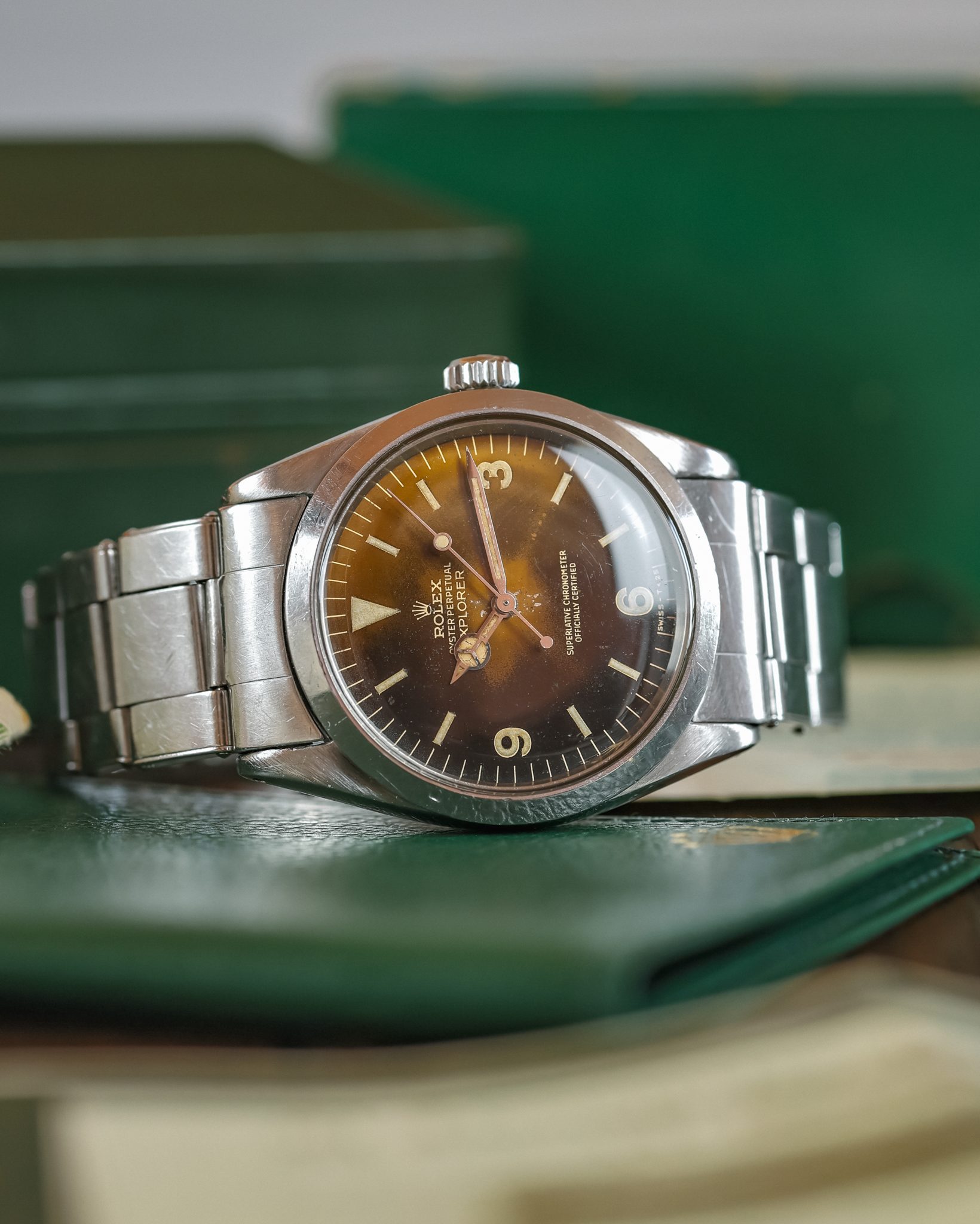
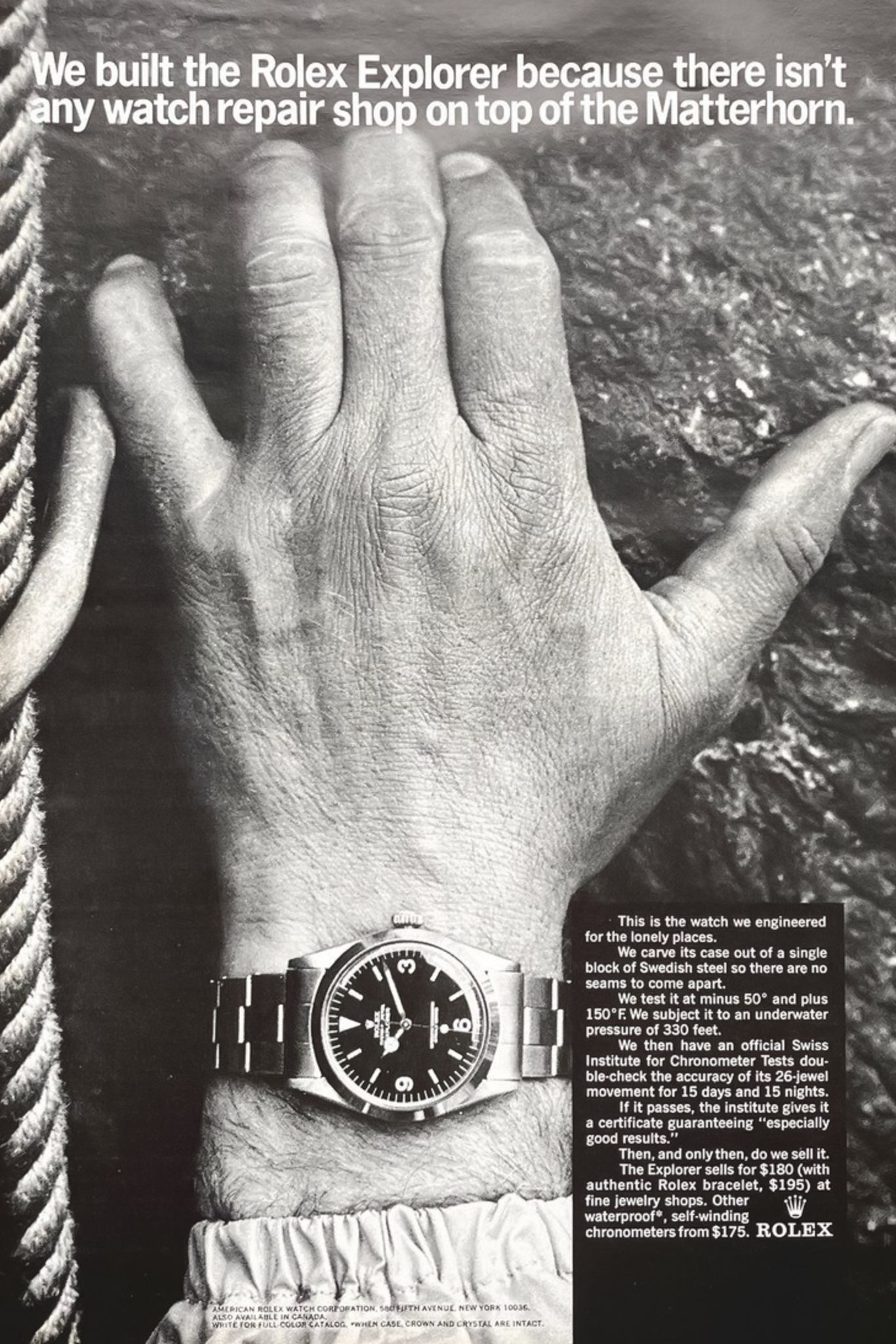
Studying recent auction hammers from Phillips, Christies, and Sothebys reveals broad market support up to and around 25-30K USD for dials comparable to this state, which would indicate a roughly 10K premium above standard examples, all else like gilt or lack thereof, case, and bracelet being equal. These are broad brushstrokes, but should give some idea. That said, the very lovely even and lightly asymmetrical examples often attract wild premiums, and you’ll regularly see sales in excess of 40K for the most lovely. Still, these come nowhere near what many consider the ultimate Explorer, the far rarer 6350 honeycomb dial, which can command 80-125K today. ‘Explorer’ covers a broad church. But for the prototypical 1016, patina is king. And this one has its full set, chronometer test results and all. In the words of Lil Jon circa 2003, ‘3-6-9, damn, you fine.’
The uneven chocolate tone here, 50% milk, is its charm and appeal. If you like totally even examples, this isn’t it. But many appreciate the 1016 for its variance. Impressively, you’re looking at a full set, even including chronometer results. That’s almost unheard of. It is on a correct rivet, unknown if its a 7206 or 6636, but for the ’64 production it’s the bracelet that’s right. The case has full edges but is hard worn, importantly the level of patina matches the dial in detail, which is precisely what you’d want to see. It comes from a well-regarded Swiss retailer.








